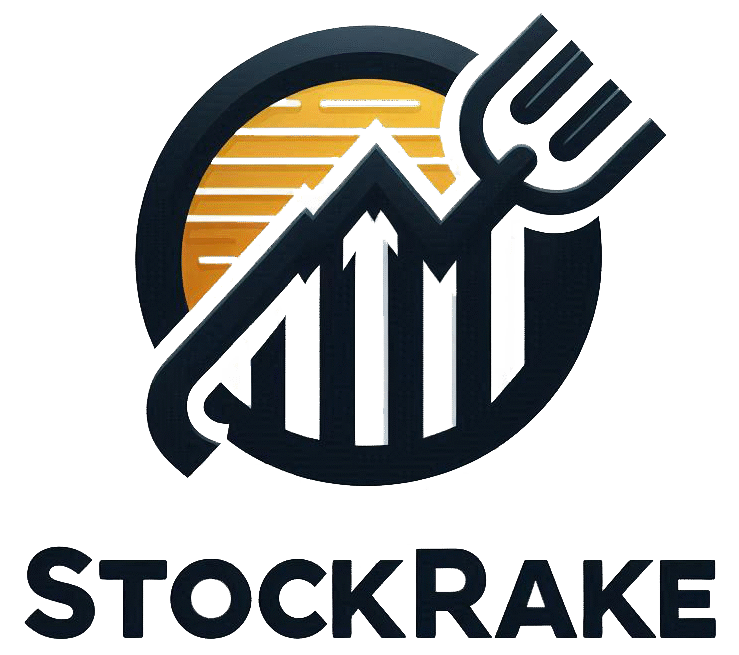Imagine waking up without an alarm clock, sipping coffee on your balcony, and realizing you never have to go to work again. That’s not a fantasy—it’s the dream behind the FIRE movement (Financial Independence, Retire Early).
The idea is simple: by saving aggressively and investing wisely, you can build enough wealth to quit the traditional 9-to-5 decades before your peers. But how does it actually work, and what strategies make early retirement truly achievable?
This guide breaks down the FIRE concept, explores its different paths, and shows you how to retire early through smart investing—with realistic examples, actionable steps, and expert-backed insights.
What’s the Goal of FIRE?
At its core, the FIRE movement is about financial freedom—having enough money invested to cover your living expenses indefinitely, so you can live life on your own terms.

That doesn’t always mean quitting work entirely. Many FIRE followers simply want flexibility—to travel more, start a business, or work part-time without financial stress.
To reach that goal, FIRE enthusiasts focus on two things:
- Extreme saving – often setting aside 50%–75% of income.
- Smart investing – growing their money efficiently through diversified portfolios.
The end goal? Accumulate enough wealth so your investments generate passive income that covers all expenses—even if you never work again.
The Origins of FIRE
The FIRE philosophy traces back to Your Money or Your Life (1992) by Vicki Robin and Joe Dominguez, a groundbreaking book that challenged people to see money as life energy.
The concept exploded online in the 2010s, thanks to finance blogs like Mr. Money Mustache and Early Retirement Extreme. Today, FIRE isn’t just a trend—it’s a global movement embraced by millennials, tech workers, and frugal investors worldwide.

Also Read: Which Sectors Are Leading the Market This Week?
Different Types of FIRE (Find Your Fit)

FIRE isn’t a one-size-fits-all lifestyle. Depending on your income, goals, and comfort level, there are several “flavors” to choose from:
| Type | Description | Typical Annual Spending | Lifestyle Example |
|---|---|---|---|
| Lean FIRE | Retire early on a minimalist budget. | $20K–$30K | Living simply, low-cost housing, DIY lifestyle. |
| Fat FIRE | Retire early without cutting luxuries. | $70K+ | Travel, fine dining, comfortable living. |
| Barista FIRE | Semi-retire with part-time work for benefits/income. | $40K–$60K | Freelancing or working part-time while enjoying freedom. |
| Coast FIRE | Save heavily early, then let investments grow passively while working minimally. | Varies | Work just enough to cover current expenses until full retirement. |
Choosing your FIRE type helps you set realistic financial goals and plan the right investment strategy.
How Many People Actually Achieve FIRE?
Although FIRE has grown popular on social media, very few Americans actually retire in their 40s or early 50s.

According to data from The Motley Fool (2016–2022):
- Ages 40–44: 1% retired
- Ages 45–49: 2% retired
- Ages 50–54: 6% retired
- Ages 55–59: 11% retired
Meanwhile, a Gallup survey found that the average retirement age in 2022 was 61, slightly earlier than expected, but still far from most FIRE targets.
However, success stories do exist—especially among high-income professionals who maintain modest lifestyles and invest strategically. The key takeaway? FIRE is possible, but it demands consistency, discipline, and smart financial choices.

Also Read: Which Healthcare Stocks Are Leading in Innovation?
Planning for FIRE: Your Step-by-Step Blueprint
1. Build an Emergency Fund
Before diving into investments, establish a financial safety net.
Aim to save 3–6 months of living expenses in an easily accessible account.
This cushion protects you from job loss, medical emergencies, or market downturns—ensuring you don’t have to dip into your long-term investments prematurely.
Pro Tip: Keep your emergency fund in a high-yield savings account for better returns while maintaining liquidity.
2. Invest Smartly
Saving is only half the battle. The real magic of FIRE lies in investing.
a. Max Out Retirement Accounts
- 401(k): In 2024, you can contribute up to $23,000 (+$7,500 catch-up if 50+).
- IRA (Traditional or Roth): Limit is $7,000 (+$1,000 catch-up for 50+).
Take advantage of employer matches—it’s essentially free money.
b. Diversify Your Portfolio
Spread your investments across:
- Low-cost index funds (S&P 500, Total Market ETFs)
- Bonds and dividend stocks for income stability
- Real estate for passive rental income
- International funds for global diversification
c. Focus on Long-Term Growth
Stick with tax-advantaged accounts and automated investing strategies. Avoid timing the market—historically, a diversified portfolio outperforms most active traders over 10+ years.
(Source: Forbes)
d. Consider Tax Efficiency
Minimize taxes through:
- Roth conversions (tax now, withdraw tax-free later)
- Tax-loss harvesting
- Asset location (keeping high-growth assets in tax-free accounts)
e. Use Robo-Advisors or Low-Fee Brokers
Platforms like Vanguard, Fidelity, or Betterment can automate investments with low fees and optimal diversification.
3. Recalculate Your FIRE Number

Your FIRE number is the amount you need to achieve financial independence.
The standard formula is based on the Rule of 25:
FIRE Number = Annual Expenses × 25
Example:
If you spend $40,000 per year → $40,000 × 25 = $1,000,000 needed to retire.
This assumes a 4% safe withdrawal rate, meaning you can withdraw 4% of your investments annually (adjusted for inflation) without running out of money.
However, for early retirees, a more conservative 3.5% withdrawal rate is often safer, especially during market volatility.
(Reference: Investopedia)
Important Caveat:
Withdrawing funds from 401(k) or IRA before age 59½ usually triggers penalties. Consider taxable brokerage accounts or Roth contributions for flexible early withdrawals.

Also Read: Which Healthcare Stocks Are Leading in Innovation?
Smart Investing Strategies for Early Retirement
Here are proven investing approaches that align with FIRE goals:
1. The 80/20 Portfolio
Keep 80% stocks for growth and 20% bonds for stability.
As you approach your FIRE goal, gradually rebalance to reduce risk.
2. Dollar-Cost Averaging (DCA)
Invest a fixed amount regularly—monthly or bi-weekly—regardless of market conditions.
This reduces emotional investing and smooths out volatility.
3. Dividend Investing
Build a portfolio that pays you steady income through dividend stocks or ETFs. Reinvest dividends early, then use them for cash flow during retirement.
4. Real Estate FIRE
Own rental properties or REITs (Real Estate Investment Trusts) to generate monthly passive income. Many FIRE followers use real estate to cover housing costs and even live rent-free.
5. Geoarbitrage
Live in lower-cost areas or countries where your money goes further. For example, $40,000 per year might provide luxury living in Portugal, Mexico, or Thailand.
Common Mistakes to Avoid on the FIRE Journey
- Underestimating healthcare costs – Consider long-term insurance and emergency funds.
- Ignoring inflation – Prices rise, so plan for 2–3% annual inflation in your projections.
- Neglecting lifestyle goals – Extreme frugality can lead to burnout. Find balance.
- Not testing retirement early – Try a “mini-retirement” for 6–12 months before fully quitting.
- Failing to adapt – Revisit and adjust your FIRE plan annually.
Expert Insights: What Financial Planners Say
According to CFP Michael Kitces, one of the leading voices in financial planning, “FIRE isn’t about retiring early—it’s about buying the freedom to choose how you spend your time.”
Financial advisors also recommend:
- Building multiple income streams
- Keeping at least 30% of assets liquid
- Maintaining health coverage and tax diversification
Conclusion: Financial Freedom Is a Journey, Not a Race
Early retirement isn’t reserved for the ultra-rich—it’s for anyone disciplined enough to save, invest, and live intentionally. Whether your goal is to leave your job at 40 or simply feel secure by 55, the principles of smart investing and FIRE can get you there.
Start small, stay consistent, and remember: financial independence = freedom of choice.
FAQs About Retiring Early Through Smart Investing
Q1. How long does it usually take to reach FIRE?
Most people reach FIRE in 15–25 years, depending on savings rate, income, and investment performance.
Q2. What’s a realistic annual return for FIRE investing?
A balanced portfolio typically earns 6–8% average annual return over the long term.
Q3. Can I achieve FIRE with an average income?
Yes, but it requires high savings discipline and living below your means.
Q4. What if the market crashes after I retire early?
Keep 2–3 years of expenses in cash or bonds to avoid selling investments during downturns.
Q5. Should I pay off my mortgage before FIRE?
It depends—some prefer the security of no debt, while others invest for higher potential returns.


